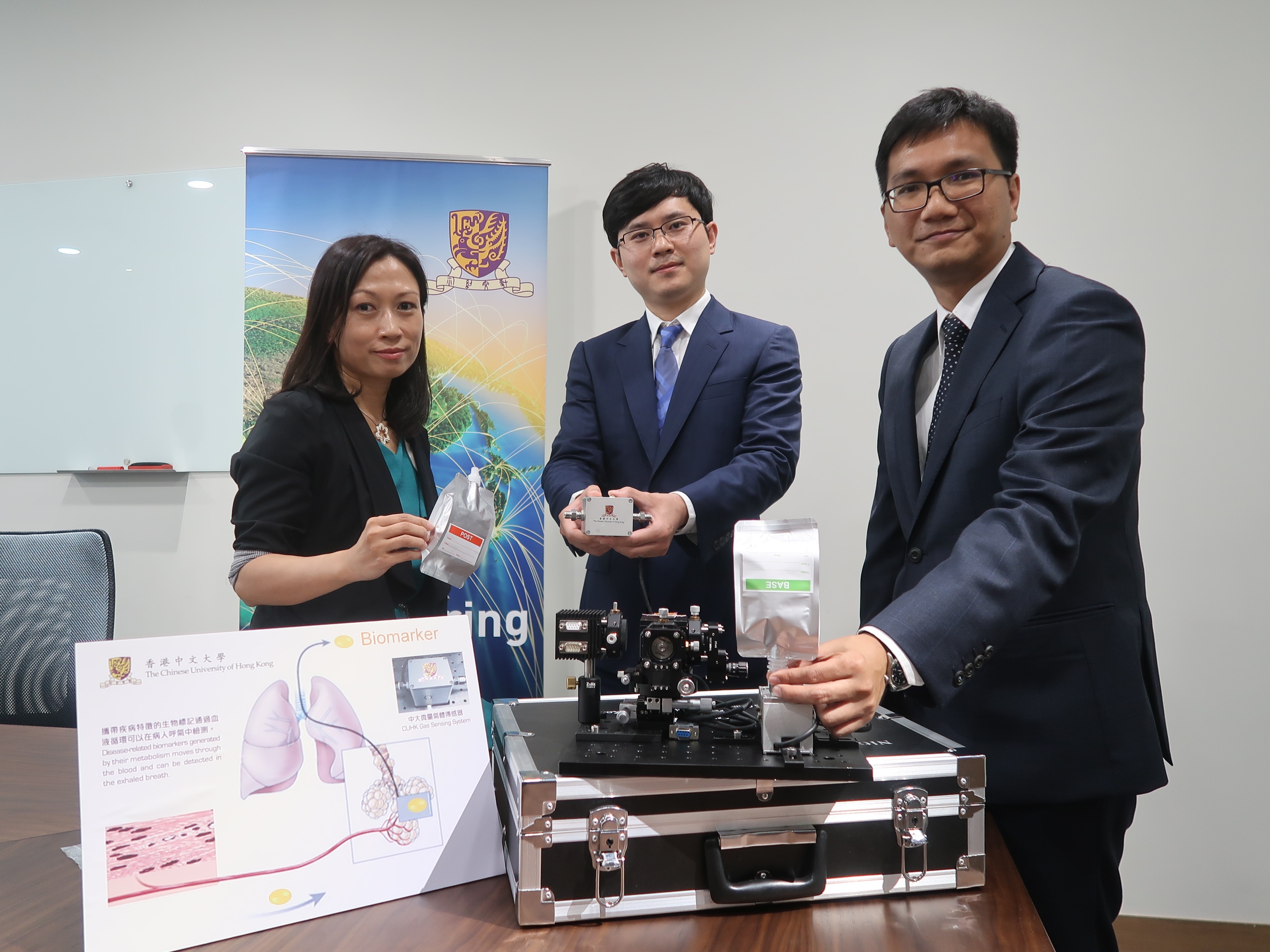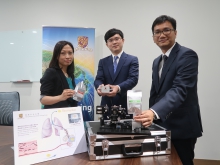CUHK
News Centre
CUHK Faculty of Engineering Develops a Small, Portable, Low-Cost Gas Sensing System
A team led by Prof. REN Wei, Assistant Professor of the Department of Mechanical and Automation Engineering, The Chinese University of Hong Kong (CUHK) has developed a portable gas sensing system with high sensitivity. The use of quartz-enhanced photoacoustic spectroscopy (QEPAS), significantly lowers operational costs. The system enables quick and accurate measurements of various pollutants, such as nitric oxide, carbon monoxide, and formaldehyde. It can also be used as an assistive tool to facilitate diagnosis by analysing air exhaled by patients.
New portable gas sensing system accurately detects trace formaldehyde
Currently there is no regulation against air pollutants given off by furniture. People who spend much of their time indoors may unknowingly be exposed to these harmful pollutants and, of all them, formaldehyde is the most notorious and classified as a carcinogen. Pure formaldehyde is a colorless air pollutant with a specific pungent smell. Right now the trace gas detectors on the market are mostly bulky, with limited dynamic range and very expensive. To tackle all these problems, the CUHK research team has made use of the cutting-edge QEPAS technology to develop a portable gas sensing system. One single inspector is able to carry this device to homes, offices, schools, hospitals and even onto transportation for in-depth inspections. When coupled with smart and remote data processing and transfer, the device can also be delivered by unmanned drones, or controlled remotely, to enter tunnels, faraway locations or disaster-afflicted areas to carry out real-time analysis and locate colourless and odourless pollutants, thereby preventing accidents related to gas anomalies.
As well as by its size, the device’s high precision and fast time-response make further breakthroughs. Professor Ren says that the technology, with a sensitivity that reaches ppb level, can measure changes in pollutant concentrations in 0.1 sec. Since small traces of formaldehyde can already have adverse impacts on a baby’s development, the high sensitivity and real-time detector can help identify trace pollutants and their sources. Another breakthrough lies in its low cost. The QEPAS technology makes use of a quartz tuning fork, a low-cost element, to quickly and accurately detect acoustic signals generated during laser absorption. A nitric-oxide detector has been developed, but by changing the laser sources, it can be adapted for other air pollutants including formaldehyde, hydrogen peroxide, ozone, and hydrogen chloride. The quartz tuning fork and laser source can be reused multiple times. Above all, the device is easy to use. Even an untrained user can comprehend the readings at a glance. It is also 50 to 100 times cheaper compared with systems that are currently available.
To assess health status by analysing air exhaled by patients
Professor Ren’s team will collaborate with the Faculty of Medicine, CUHK at the Prince of Wales Hospital and the Alice Ho Miu Ling Nethersole Hospital to test the system’s clinical application this year. ‘Carbon isotopes indicate the existence of Helicobacter pylori, which is linked to gastritis, gastric ulcer, and even stomach cancer. This technique frees the patient from the discomfort of intrusive exams such as gastroscopy. By analysing the air exhaled by patients, biomarkers of specific diseases can be detected. For example, other biomarkers include acetone which is linked to diabetes and heart failure, hydrogen which indicates lactose intolerance, and nitrogen (or ammonia) which relates to the functions of the liver and kidneys. The presence of excessive nitric oxide hints at the possibility of asthma and chronic heart failure. Lung cancer, the top cancer killer in Hong Kong, can also develop from the volatile organic compounds in exhaled air. The diverse application of exhaled air analysis can lead to possibly early diagnosis and an improved cure rate,’ said Professor Ren.
Highly flexible, extremely sensitive, fast in action, and portable, the gas sensing system is a major breakthrough for Hong Kong and other metropolises. Professor Ren hopes that the government and groups concerned with the environment can make use of this high-speed and accurate device to find out about the concentration and distribution of various air pollutants and draw up proper policies to improve air quality, protect public health, reduce medical expenses and facilitate the development of smart cities. In Mainland China, investment in the environmental protection sector is set to reach 17 trillion RMB. The breakthrough in the gas sensing system is set to have a profound impact on public health, economy and industrial development.
Comparisons between conventional and new systems
|
|
Portable gas sensing system |
Current gas detectors |
|
Size |
Small |
Bulky |
|
Portability |
High |
Low |
|
Instantaneity |
Real-time |
Delayed |
|
Operational knowledge requirements |
Low |
Must be operated by professionals |
|
Areas of application |
Far and wide |
Limited |
|
Cost |
Low |
High |





